
White wood aster (Symphyotrichum divaricatus) Bowman's Hill Wildflower Preserve
Description White Woodland Aster (Aster divaricatus) is one of the first asters to bloom, brightening up the shade garden from late summer into fall. Numerous small daisy-like flowers with white petals and yellow centers are borne in loose clusters at the ends of the stems.

White wood aster (Aster divaricatus) • Family Aster (Asteraceae) • Habitat dry woods • Height
Bloom Color: Off white Foliage Color: Green Date of First Flower: 6/22/2009 Weeks In Flower: 15 We couldn't do this without our sponsors. Thank you.

Eurybia divaricata ‘Eastern Star’ White Wood Aster Catskill Native Nursery Plant Shop
Buy online from £6.99 Plant nurseries 58 suppliers Size Ultimate height 0.5-1 metres Time to ultimate height 2-5 years Ultimate spread 0.5-1 metres Growing conditions Chalk Sand Clay Moisture Moist but well-drained pH Acid, Alkaline, Neutral Colour & scent

White wood aster (Eurybia divaricata, Syn.Aster divaricatus Stock Photo Alamy
Genus and Species: Aster divaricatus Family: Asteraceae Common Name: White Wood Aster Habit: perennial Height: 1-3 feet Flower Color: white with yellow or red center Native To: North America Range: West Virginia, Virginia, North Carolina, Tennessee, Georgia and Alabama Blooming Period: July-October Water Requirement: low to moderate
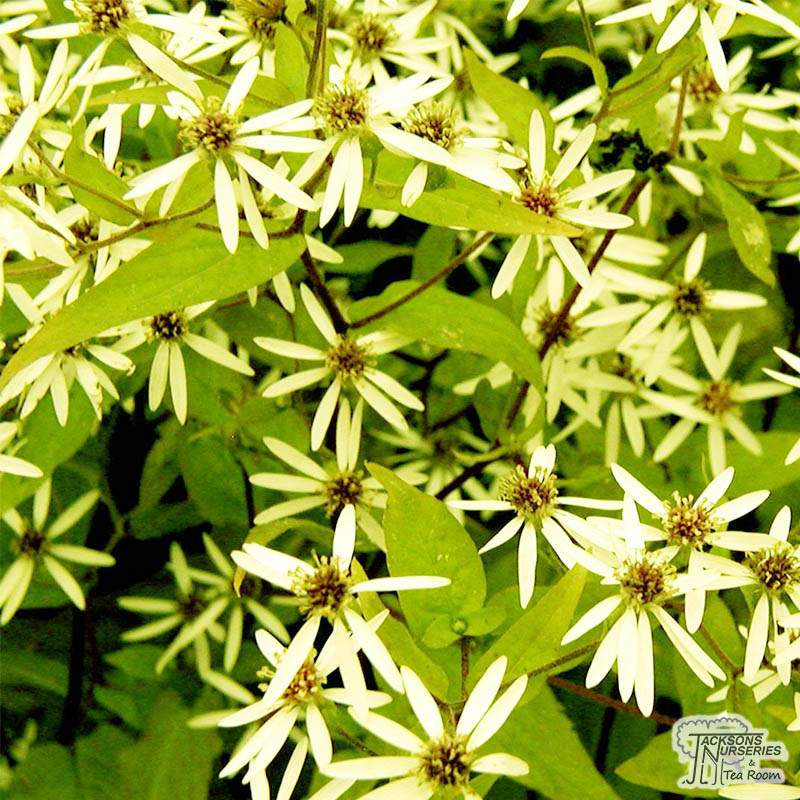
Buy Aster divaricatus (White Wood Aster) in the UK
Eurybia divaricata (syn. Aster divaricatus ), the white wood aster, is an herbaceous plant native to eastern North America. It occurs in the eastern United States, primarily in the Appalachian Mountains, though it is also present in southeastern Canada, but only in about 25 populations in the provinces of Ontario and Quebec.
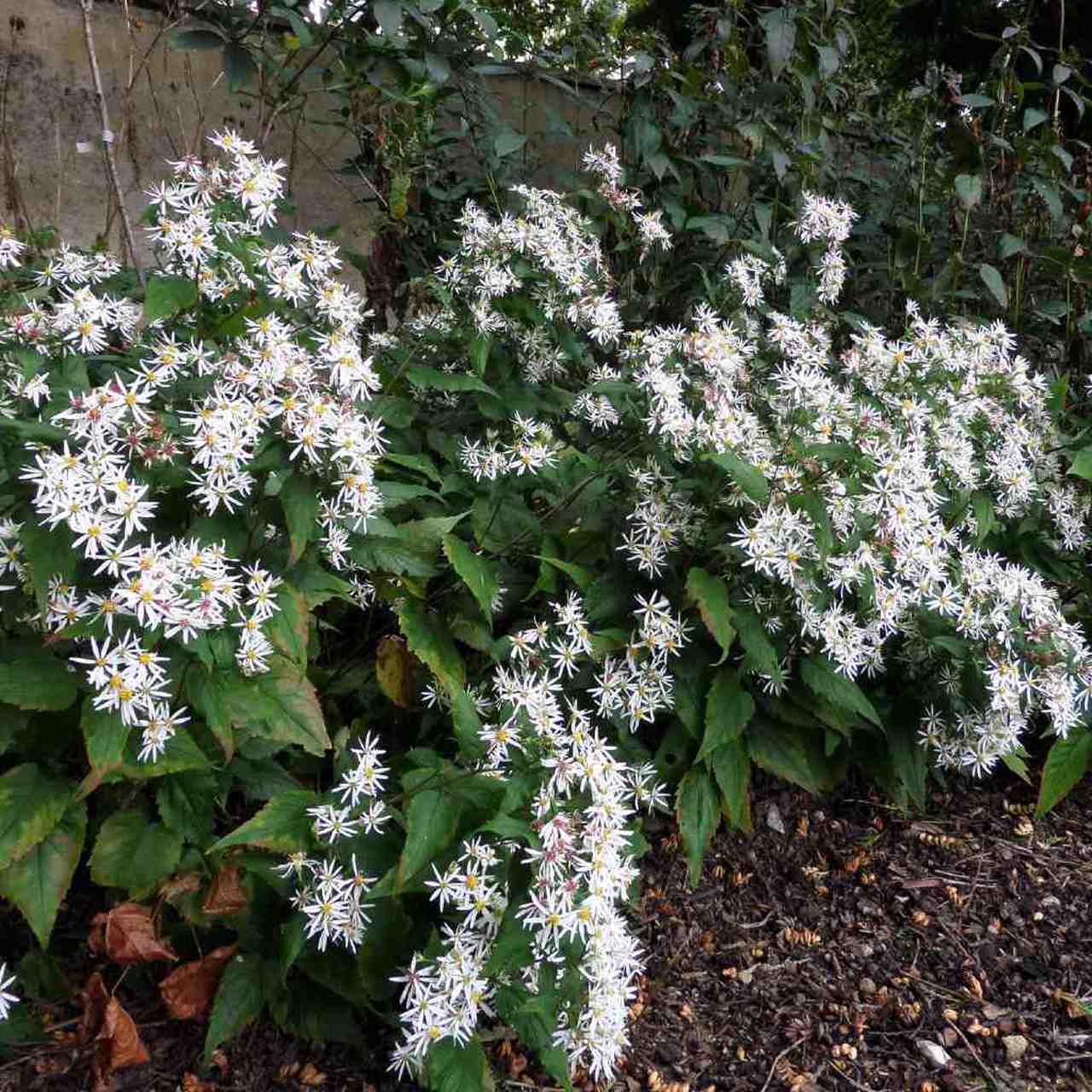
White Wood Aster Landscape Design, Installation, Maintenance and Native Plant Nursery Lauren
Advantages. USDA Zones. 3-8. Plant Spacing. 2-3'. Catalog Code. AST07F. Also called Aster divaricata, White Wood Aster has white petals with yellow to red centers. It is native to the eastern U.S., from Maine to Alabama.
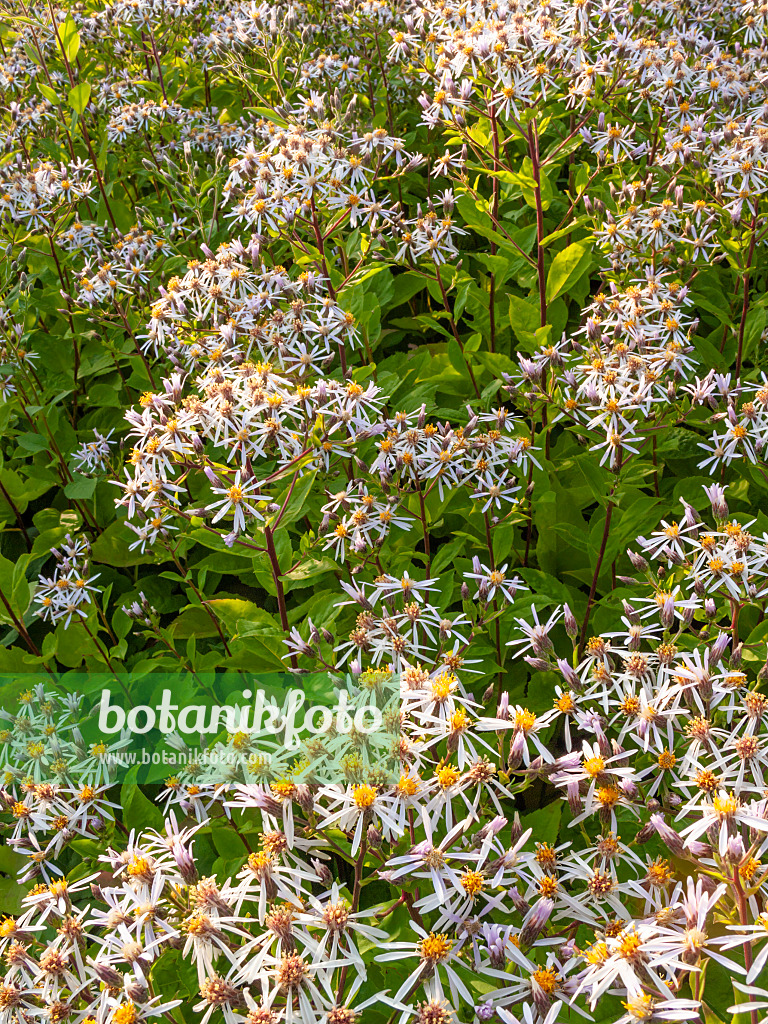
Image White wood aster (Aster divaricatus) 415030 Images of Plants and Gardens botanikfoto
PLANT DESCRIPTION: Aster divaricatus 'Eastern Star' is a mounding or softly sprawling perennial. Plants form dense colonies from underground rhizomes and tend to self-seed. Heart shaped leaves occur at ground level and smaller ovate leaves are arranged along the black wiry stems.
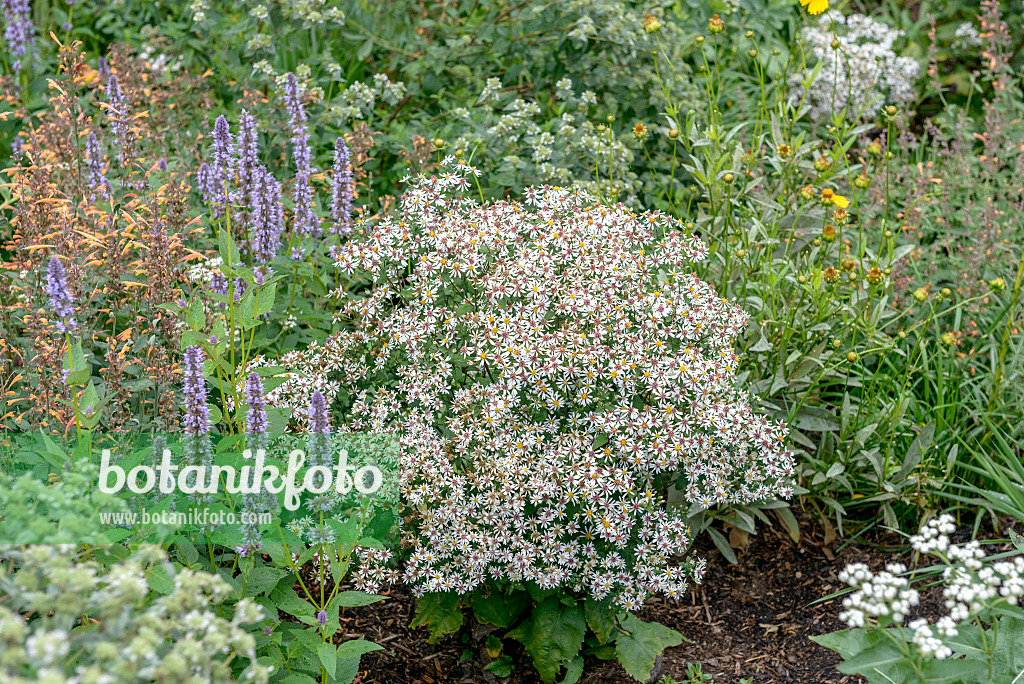
Image White wood aster (Aster divaricatus 'Tradescant') 575022 Images of Plants and Gardens
Growing. Add a thin layer of compost (or a portion of balanced fertilizer) with a 2-inch layer of mulch around the plants every spring to encourage vigorous growth. If less than 1 inch of rain falls weekly in summer, water regularly. But beware. Many asters are sensitive to too much or too little moisture.
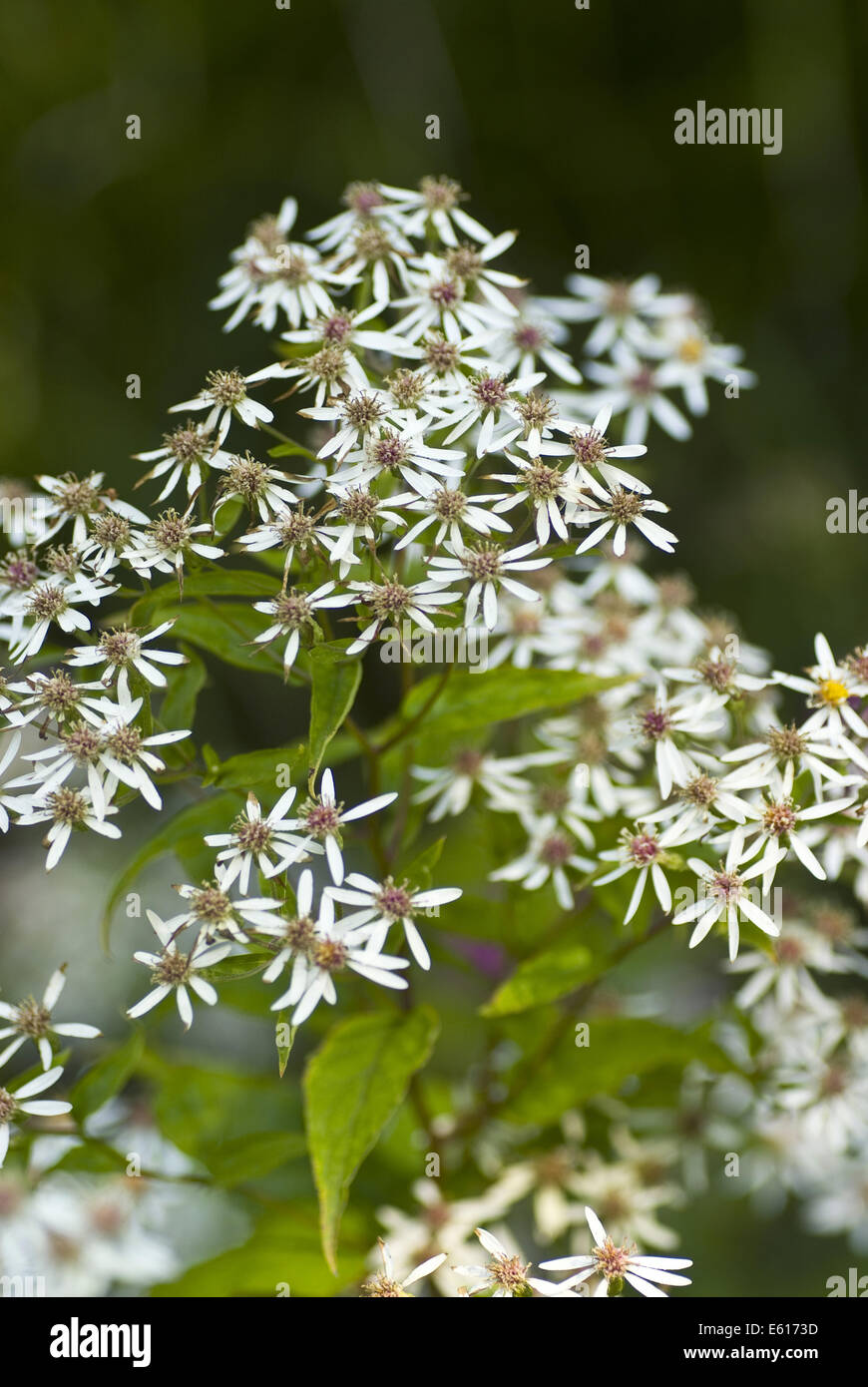
white wood aster, aster divaricatus Stock Photo Alamy
Aster divaricatus provides excellent late summer season nectar resources for beetles and Lepidoptera species and provide valuable habitat in its foliage for their larval stage. Aster divaricatus Growing and Maintenance Tips Grow in part to full shade in average to dry soil. Good Substitutions Aster divaricatus 'Eastern Star'
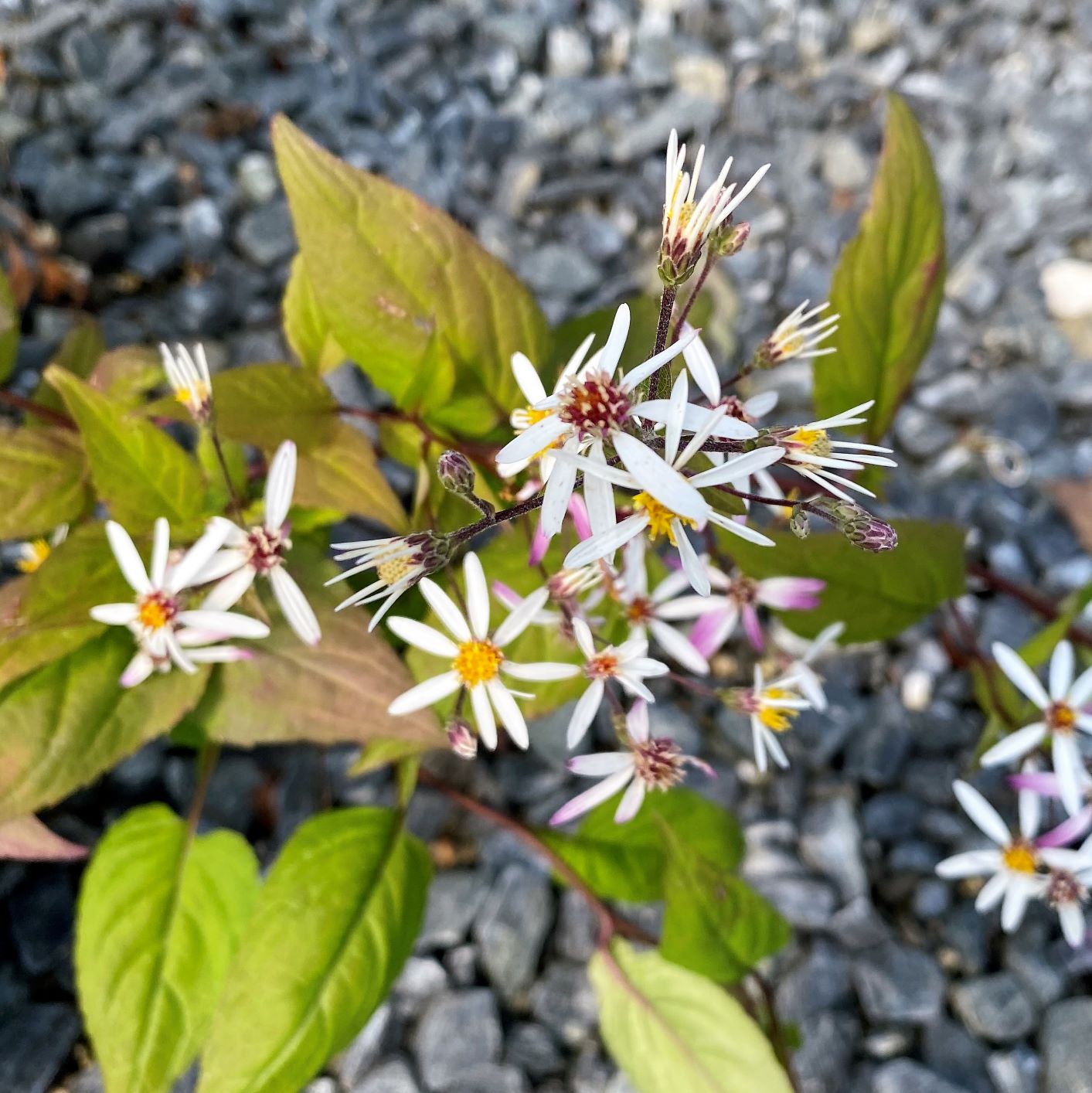
Aster divaricatus (White Wood Aster) Cavano's Perennials
Sprawling White Wood Aster (formerly classified as Aster divaricatus) traditionally blooms in late summer to early fall with numerous clusters of small white flowers. It is great for woodland gardens, where it grows vigorously and aggressively, even in dry shade.

Aster divaricatus White Wood Aster Keystone Wildflowers
Description Woodland aster, is a native herbaceous perennial in the Asteraceae (daisy) family. Native to the Eastern United States this wildlfower typically grows in dry open woodlands, primarily in Appalachian mountain areas.

White wood aster (Aster divaricatus) • Family Aster (Asteraceae) • Habitat dry woods • Height
White wood aster is an eastern species, common throughout New England except confined to the southern portion of Maine. The strongly heart-shaped leaves with large coarse teeth are distinctive. The young leaves are edible when cooked. Habitat Forests Characteristics Habitat terrestrial New England state Connecticut Maine Massachusetts New Hampshire
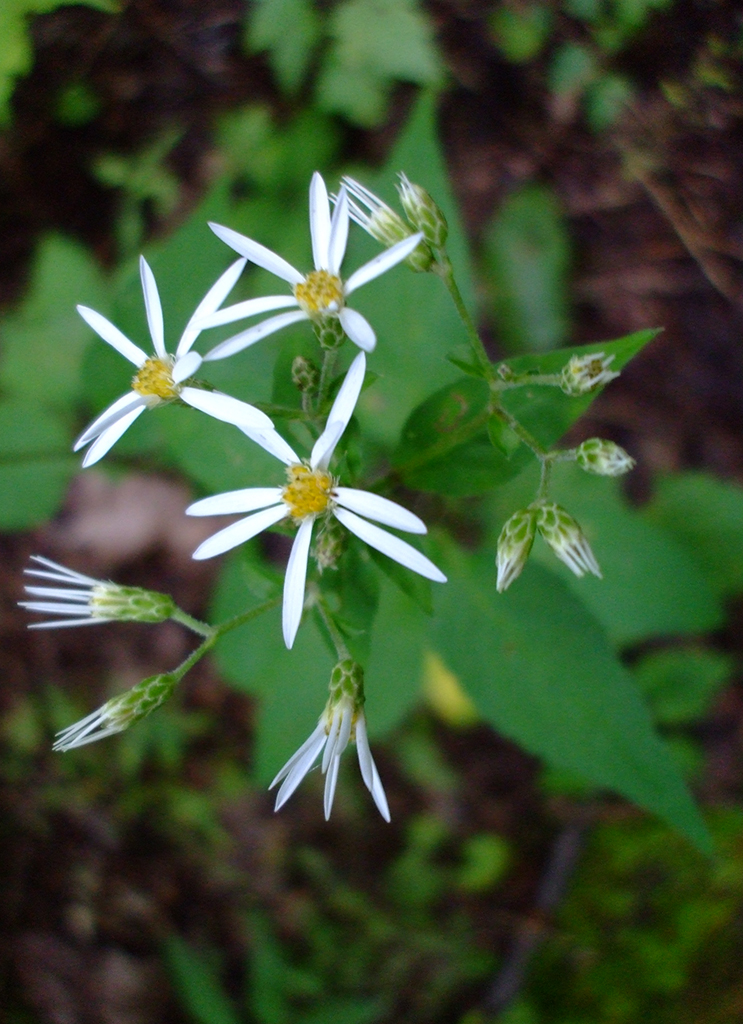
Eurybia divaricata White Wood Aster Prairie Moon Nursery
Our Plants are Chosen for Their Beauty, Hardiness, and Ability to Create Natural Habitats. Hundreds of Water-Thrifty and Native Plants Developed Exclusively for High Country Gardens

Aster, White Wood (Aster divaricatus) 03 Wild Flowers of Sleepy Hollow Lake From All
PLANT DESCRIPTION: Aster divaricatus is a mounding perennial that forms dense colonies from underground rhizomes. Heart shaped leaves occur at ground level and smaller ovate leaves higher on the stems. Flat topped branched flower clusters appear from late summer until mid-fall.

White wood aster (Aster divaricatus) • Family Aster (Asteraceae) • Habitat dry woods • Height
Notes: White Wood Aster, formerly classified as Aster divaricatus, is not native to the State.It is native to the eastern United States and in Canada to Quebec and Ontario where it is considered rare and endangered. It was originally brought into the Garden by Eloise Butler in 1911 from Gillett's Nursery in Southwick, MA.
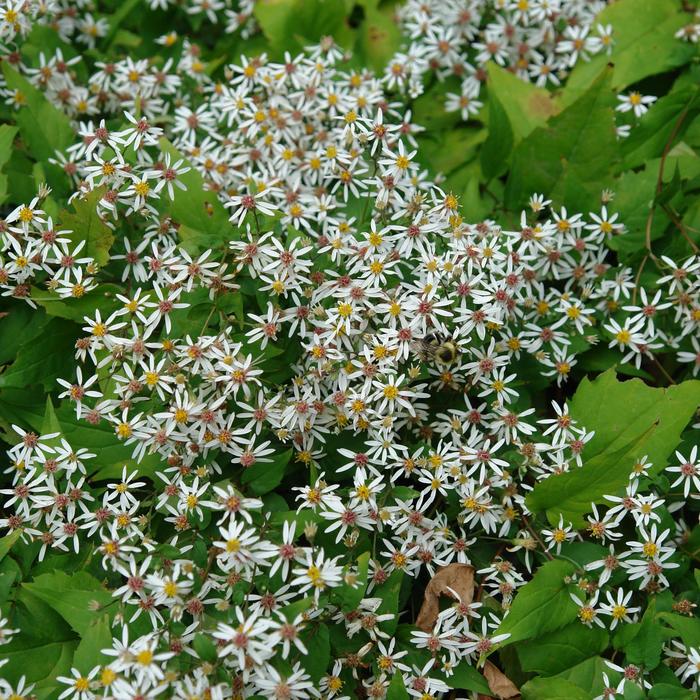
Aster divaricatus 'Eastern Star' Eastern Star White Wood Aster Gateway Garden Center
Eurybia divaricata is a shade-loving aster. It produces large quantities of flowers with white rays and yellow central disks, that seem to float above the contrasting deep-green foliage. Although the individual flowers are delicate and only 1" across, it blooms in large, showy terminal clusters. The leaves are spade-like, coarsely serrated.